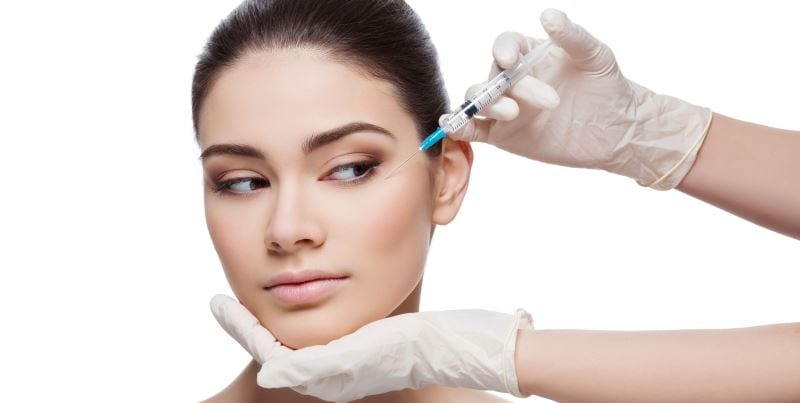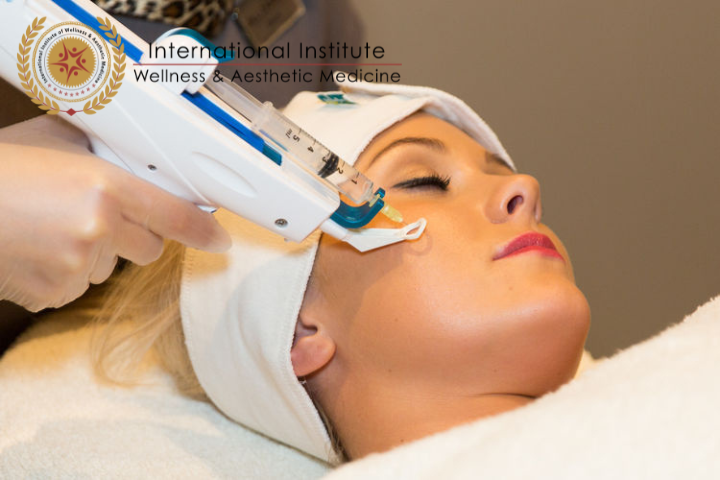Platelet-Rich Plasma- The Right Way of Doing It
Skin aging leads to decreased vascularization, limited replenishment of cells and the intercellular matrix, skin appendage disorders, fat atrophy, and loss of muscle tone. Platelet-rich plasma (PRP) is a concentrate of platelets that has broadly been used to speed up the overall restoration of human skin tissues. In the field of skin rejuvenation, the theory is that platelet-rich plasma, through various secreted growth factors and cytokines, promotes collagen production and fibroblast multiplying in aged skin.
At Aesthetic Academy Asia, we have a team of certified doctors that impart comprehensive clinical knowledge and hands-on-training to doctors, dentists, Aesthetic Nurses, Aestheticians, and spa owners in the field of Aesthetic medicine. Aesthetic Academy Asia is based in Malaysia and receives Aesthetic students from the Philippines, Myanmar, Cambodia, India, Indonesia, and other parts of Asia. Assoc. Prof Dr. Morthy is the lead trainer and course director for the region. He is also the medical director of Global Aesthetic (www.globalaesthetic.com) which offers advanced Aesthetic medical procedures. Aesthetic Academy Asia with the insignia of “Be Certified, Be Recognized” has always stressed the importance of structured Aesthetic medical education with international recognition for those opting for a career in Aesthetic Medicine.
Under our advanced Medical Aesthetic Certification programme in Malaysia and our International Online Aesthetic courses, Aesthetic students are trained extensively on the application and benefits of Platelet-rich plasma (PRP) therapy for overall skin rejuvenation. When administered by a knowledgeable individual with proper training, the risks of the cosmetic procedure can be minimized while maximizing the benefits, which is what Aesthetic Academy Asia aims at. Today, we will talk about platelet-rich plasma, the procedure for obtaining and injecting platelet-rich plasma along with the importance of training in the whole cosmetic procedure.
What is platelet-rich plasma?
Platelet-rich plasma has a high concentration of growth factors such as platelet-derived growth factor (PDGF), transforming form growth factor (TGF), those secreting from endothelial vessels i.e., vascular endothelial growth factor (VEGF), and lastly, those factors with serum insulin-like activity, i.e., insulin-like growth factor (IGF), as well as plasma proteins such as fibrin, fibronectin, and vitronectin. Platelet-rich plasma increases the presence of proteins that regulate the G1 cell cycle, collagen type I, matrix-derived metalloproteinase-1 (MMP-1), and MMP-2 within human skin fibroblasts (HSF), and messenger ribonucleic acid (mRNA) in human dermal fibroblasts. Non-Surgical platelet-rich plasma injection therapy is an effective cosmetic procedure to tighten and improve the overall appearance of the skin.

(Source)
What is the procedure for obtaining platelet-rich plasma?
In order to obtain platelet-rich plasma, at first, blood is taken from the vein of the patient and collected in sterile tubes with citrate as an anticoagulant. The tubes are then centrifuged in a conventional centrifuge. The duration, speeds, and a number of centrifuge steps depend on the quality of the machine used. To avoid fragmentation of the platelets and the subsequent early release of the secreted proteins, with a corresponding negative impact on their bioactivity, low centrifugation speeds are generally recommended.
When the anticoagulated blood is centrifuged, 3 layers with different densities separate out: the lower layer, composed of red blood cells; the middle layer, composed of white blood cells and platelets; and the upper layer, composed of plasma. The plasma phase, in turn, can be subdivided into 3 fractions according to the number of platelets present. These fractions are, from most to least abundant: the platelet-poor fraction, the intermediate fraction with a medium concentration of platelets, and the platelet-rich fraction. This division of the plasma phase cannot be detected by the eye, so the fraction is simply subdivided into the upper, lower, and middle thirds. Each fraction is separated into different sterile tubes by pipetting. In order to achieve platelet degranulation and the subsequent release of the growth factors and other bioactive molecules, the lower fraction of the plasma phase has to be activated. The platelet-rich phase can be activated with different agents, calcium chloride and thrombin being the most widely used. The platelet-rich plasma is then applied by injection or as a gel. In the former case, the activated mix will be injected within 10 minutes whereas in the latter case the doctors will wait until a gel has formed. This normally requires heating or the addition of bioactive polymers to the derived platelet-rich plasma.
Using local anaesthetic to numb the area and ultrasound to map where exactly the needle should go, the doctor slowly injects the platelet-rich plasma into the problem area. The injection of this ingredient leads to collagen synthesis in the area that was injected. Collagen is the material responsible for keeping the skin elastic and smooth.
The right way of doing it: The DEPA Classification
The DEPA classification (Dose, Efficiency, Purity, Activation) that focuses on the quantity and quality of platelets is majorly based on 4 different components.
The dose of injected platelets is calculated by multiplying the platelet concentration in PRP by the obtained volume of PRP. According to the injected dose (measured in billions or millions of platelets), it should be categorized into (a) very high dose of injected platelets of >5 billion; (b) high dose of injected platelets, from 3 to 5 billion; (c) medium dose of injected platelets, from 1 to 3 billion, and (d) low dose of injected platelets, <1 billion.
The efficiency of the production corresponds to the percentage of platelets recovered in the PRP from the blood. It is categorized as follows: (a) high device efficiency if the recovery rate in platelets is >90%; (b) medium device efficiency, if the recovery rate in platelets is between 70 and 90%; (c) low device efficiency, if the recovery rate is between 30 and 70%, and (d) poor device efficiency, if the recovery rate is <30% and corresponds to the relative composition of platelets, leucocytes, and RBCs in the obtained PRP.
The purity of the Platelet-rich plasma obtained correlates to the relative composition of platelets, leucocytes, and RBCs in the obtained PRP. It is described as (a) very pure PRP, if the percentage of platelets in the PRP, compared with RBCs and leucocytes, is >90%; (b) pure PRP, between 70 and 90% of the platelets; (c) heterogeneous PRP, if the percentage of platelets is between 30 and 70%, and (d) whole-blood PRP, if the percentage of platelets in the PRP is <30% compared with RBCs and leucocytes.
The activation process refers to 2 key processes that are initiated during PRP preparation: (a) degranulation of platelets to release GFs from α-granules and (b) fibrinogen cleavage to initiate matrix formation, a clotting process that allows the formation of a platelet gel, and therefore to confine the secretion of molecules to the chosen site. An exogenous clotting factor is generally used to activate platelets, such as autologous thrombin or calcium chloride.

(Source)
Why is training important?
Injecting platelet-rich plasma should be performed under certified aesthetic practitioners who are trained individuals skilled to perform procedures with adequate knowledge about the treatment. This is crucial because when injected, these can cause allergic reactions, infections, nerve injuries, pain at the injection site, and tissue damage. At Aesthetic Academy Asia, the aesthetic doctors & aesthetic dentists are intensively trained in theory as well as clinical skills under our advanced aesthetic courses in PRP so that they can execute the cosmetic procedure, safely and effectively.
Similarly, Aesthetic nurses, aestheticians, and spa owners are also trained to understand the basic principles of injecting platelet-rich plasma under our cosmetology certification programme.
The advanced aesthetic courses in the PRP curriculum include:
-
What is PRP and how are they suitable for skin rejuvenation?
-
What is the procedure for obtaining PRP?
-
How to inject PRP correctly?
-
What are PRP complications?
-
How to avoid PRP complications?
-
How to treat PRP complications?
Aesthetic Education at Aesthetic Academy Asia
At renowned Aesthetic Academy Asia, may it be for students from the Philippines, Myanmar, India, Cambodia, Indonesia, or any part of the world, we take Aesthetic education with utmost seriousness and help our students learn and practice effective Aesthetic procedures so they are confident enough to start their career in Aesthetic. Our students are well versed to handle any situation, simply because we focus on teaching the fundamentals and principles of the Aesthetic procedures before venturing into clinical skills. Our students learn advanced and new skills and techniques that are different than the textbooks. We teach them safe, effective, and affordable ways to perform Aesthetic procedures. In addition to the Professional Diploma in Aesthetic Medicine for Doctors & Dentists and Professional Certificate in Advanced Aesthetic for Nurses, Aestheticians and Spa Owners, Aesthetic Academy Asia also conducts specialized and advanced training such As Non-Surgical Body Sculpting, Dermal Filler (Restylane, Juvéderm, Teosyal, Bellotero), Botulinum Toxin (Botox, Dysport, Xeomin), Skin Boosters (Restylane Skin Booster, Profhilo, Rejuran) Platelet Rich Plasma (PRP), Threadlift (PDO, Aptos, Happy Lift) and more. Now with the current pandemic, the Academy is conducting online Professional Diploma in Aesthetic Medicine and online Professional Certificate in Advanced Aesthetic courses using state of the art virtual meeting technology.
The Academy has produced some of the finest Aesthetic graduates in the world who have graduated from our professional aesthetic courses with dual international certificates.

